Bethel Chapel, or more correctly Bethel Welsh Baptist Church, is in Baker Street, Aberystwyth. Its roots can be traced back to 1787, and the chapel itself was built in 1797, then rebuilt during 1833 and again during 1888. The members of the Chapel who fell during both World Wars are commemorated on brass plaques inside the chapel. The photograph of the memorial is courtesy of Gil Jones, while the portraits of the men are courtesy of Ceredigion Archives.
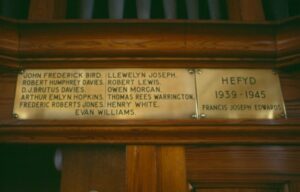
The Great War, 1914-1918
John Frederick Bird, Private, 76348, Royal Army Medical Corps. John was born in 1892, the son of Frederick and Kate Bird, of 7, South Road, Aberystwyth. He enlisted at Aldershot on 25 October 1915 and went to France in June 1916 with the 5th Field Ambulance, Royal Army Medical Corps. The 5th FA was attached to the 2nd Division, and John would have treated many wounded men during the Battle of the Somme that year. In March 1917 the Division followed the German Retreat to the Hindenburg Line, and in April they fought at Arras, during the First Battle of the Scarpe, the Battle of Arleux and the Third Battle of the Scarpe. Their next major action was at the Battle of Cambrai. The Division was still in the area when John was killed in action on 18 February 1918. He was 25 years old, and is buried in the British Extension of Metz-en-Couture Communal Cemetery, France.
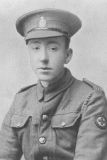
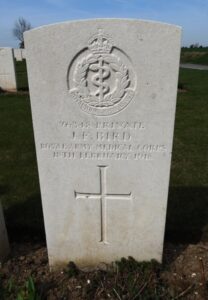
David John Brutus Davies, Bombardier, 86740, Canadian Field Artillery. David, better known to his Aberystwyth friends as Brutus, was born on 27 March 1887, the son of Hannah Davies and was educated at the County School in Aberystwyth before serving as an apprentice fitter and turner at the Rheidol Foundry. In 1910 he emigrated to Canada where he settled in Saskatchewan with his wife Ada. A former territorial with the Cardigan Battery he enlisted at Winnipeg on 29 December 1914 into the 5th Brigade, Canadian Field Artillery. The battery moved to France in the spring of 1915, and took up positions at Ypres. The Canadians took part in several major actions during 1915, and after another engagement at Mount Sorrel in June 1916 moved to the Somme. Here the Canadians fought at the battle of Flers-Courcelette, and the ensuing Battle of Thiepval. On 3 November 1916, Brutus, along with thirteen men of his company, was at sleep in a trench near Pozières, when they were killed by a German shell. David was 29 years old, and is buried in Pozières British Cemetery, France.
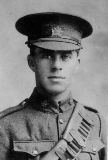
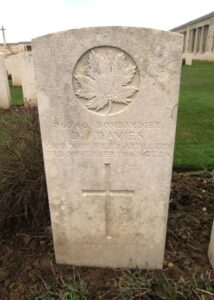
Robert Humphrey Davies, Second Lieutenant, Royal Welsh Fusiliers. Robert was born at Swansea in 1888, the Son of the Reverend Evan William and Sarah Davies. Prior to the war he was a Student at Aberystwyth University, where he met and married his wife, Rosa Gwendoline Davies, and the couple set up home at Dolgoed, Elm Tree Avenue, Aberystwyth. Robert originally enlisted into the Royal Engineers Special Gas Company, and served in France from 14 September 1915. On 19 February 1918, Robert was commissioned into the 13th Battalion, Royal Welsh Fusiliers, which was attached to 113 Brigade, 38th (Welsh) Division. He joined the battalion prior to its move from Armentieres to the Somme, where the Division took up positions facing Aveluy Wood, north of Albert. Here they regained some ground in the coming weeks, before settling down for routine trench warfare, until the launching of the great offensive on 21 August 1918. The 13th RWF advanced across the River Ancre over the coming days, and saw heavy fighting. Robert was killed in action here on 23 August 1918. He was 30 years old, and is buried at Bouzincourt Ridge Cemetery, Albert, France.
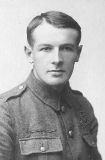
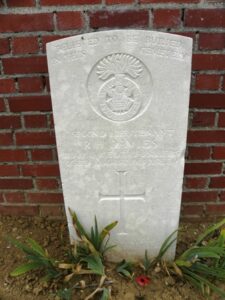
Arthur Emlyn Hopkins, MC, Captain, East Lancashire Regiment. Arthur was the son of John and Annie Hopkins, of Wellington House, Trealaw, Rhondda. He was commissioned into the East Lancashire Regiment, and served with the 2/5th Battalion, East Lancashire Regiment, which was attached to 126 Brigade, 42nd (East Lancashire) Division. The Division had served at Gallipoli in 1915, and had spent 1916 in Egypt. It moved to the Western Front in February 1917, taking over the line near Epehy then Havrincourt. In September the Division moved north to Ypres, and fought through Third Ypres, until moving to the Coast in September to refit. November 1917 saw them moving to positions at Givenchy, where they remained until moving back south in early 1918. On 21 March 1918 the Germans launched a mass attack on the Somme, which was pre-empted by specialist storm-trooper units. Arthur was killed in action during desperate fighting that day. He was 21 years old, and is commemorated on the Pozières Memorial, France.
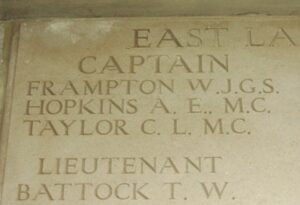
Frederic Robert Jones. Fred was born in Portland Street, Aberystwyth in 1885 and was the only son of Mr and Mrs Peter Jones JP. He was educated at Alexander Road School and Aberystwyth County School. On leaving school Fred served his engineering apprenticeship in Green’s Foundry, Aberystwyth before taking up employment at Metcalfe’s engineering works in Manchester and the Great Western railway works in Swindon. To progress his career he left for Canada in March 1912 and was employed in construction work on the Canadian Northern and Canadian Pacific Railways. Realising the urgent need for his engineering skills for the war effort he decided in 1915 to return home on the first available boat and offer his engineering skills to the armaments industry. Frederick booked second cabin passage on the RMS Lusitania from New York to Liverpool. The liner left New York on the 1 May and six days out, on the afternoon of 7 May, the Lusitania was torpedoed by the German submarine U-20, twelve miles off the Old Head of Kinsale in southern Ireland, She sank within twenty minutes. No trace of his body was ever found. He was 30 years of age. Though not in the armed forces, Frederick Jones is commemorated on three war memorials in Aberystwyth; Aberystwyth County School, Alexander Road School and Bethel Chapel.
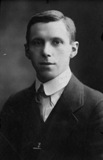
Llewelyn Rees Joseph, Private, 53080, Northumberland Fusiliers. Llewellyn was born in Aberystwyth and was the son of David and Mary Joseph. He served throughout the war with the 1st Battalion, South Wales Borderers, after landing in France on 1 April 1915. By the time of the armistice, his health had deteriorated, and Llewellyn was serving with the 2nd Garrison Battalion of the Northumberland Fusiliers. He was discharged from the army as medically unfit on 11 December 1919. Llewellyn was 39 years of age when he died at Abergavenny of pulmonary tuberculosis on 13 May 1920. His remains were brought back home for burial in Aberystwyth Cemetery.
Robert Lewis, Private, 88489, King’s Liverpool Regiment. Robert was born at Llanbadarn in 1880, and was the Husband of Ethel M. Lewis. H originally enlisted at Aberystwyth into the East Surrey Regiment, but was later transferred into the 6th Battalion, King’s Liverpool Regiment, which was attached to 165 Brigade, 55th (West Lancashire) Division. The Division was formed in France during January 1916, and moved to Arras. During July 1916 the Division moved south and took up a place in the front line opposite the village of Guillemont, fighting at the Battle of Guillemont and the Battle of Ginchy. After a brief rest, the Division fought at the Battle of Flers-Courcelette and the Battle of Morval. During October 1916 the Division moved to Ypres, taking over the Railway Wood sector, and on 31 July 1917 took part in the Battle of Pilkem. After suffering terrible casualties, the Division was withdrawn to Recques for re-fit and training, before moving back into the line on 15 September, and fighting at the Battle of the Menin Road. Robert was killed in action here on 29 October 1917. He was 37 years old, and is commemorated on the Tyne Cot Memorial, Belgium.
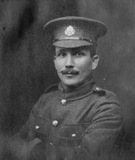
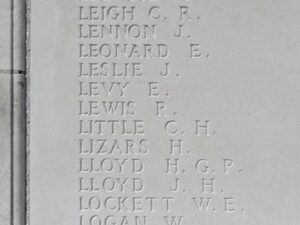
Owen Morgan, Corporal, 10823, South Wales Borderers. Owen was born at Aberystwyth, the son of Thomas and Ellen Morgan. He re-joined the 2nd Battalion, South Wales Borderers from the reserve at the outbreak of war. The battalion was in China in 1914, and fought at engagement against the German garrison at Tientsin before returning to England, joining 87 Brigade, 29th Division. The Division moved to Gallipoli via Egypt, landing on 25 April 1915. Owen joined the battalion at Gallipoli as part of a draft of reinforcements on 24 May 1915. The Division remained here until evacuation to Egypt on 11 January 1916 and then moved to the Western Front on 15 March 1916. The Division took part in its first major action in France during the 1916 Somme Offensive, and fought at the Battles of Albert and Le Transloy, suffering heavy casualties. At the beginning of February 1917 the Battalion took over from the Border Regiment and occupied the front line, German Trench for a three day tour. During 4 February 1917 the enemy shelled the 2nd Battalion’s position, and Owen was killed that day when a shell from a German trench mortar exploded, killing him and eight of his comrades. Owen was 24 years old and is buried in Caterpillar Valley Cemetery, Longueval, France.
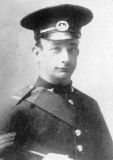
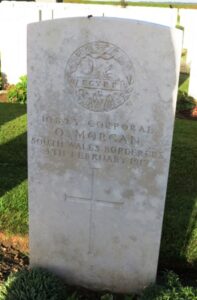
Thomas Rees Warrington, Private, 11413, South Wales Borderers. Thomas was born in 1896, the son of Edward Lloyd Warrington and Margaret Warrington (nee Jones), of 4, Fountain Road, Trefechan, Aberystwyth. He enlisted at Brecon into the South Wales Borderers. Thomas landed in France on 4 January 1915, joining the 1st Battalion, South Wales Borders, which was attached to 3 Brigade, 1st Division. The Division was in Flanders, and was rebuilding after the First Battle of Ypres. During 1915 the Division saw heavy fighting at the Battle of Aubers, before moving South to Loos, where they fought during the Battle of Loos in September 1915, and the action at the Hohenzollern redoubt. The Division remained at Loos over the winter, and in February 1916 the 1st SWB were in trenches at Les Brebis. On 22 February 1916, snow fell on the lines, and under the cover of the snow, a party of men were sent out to recover the bodies of several of their comrades which had lain in No Man’s Land for several weeks. Thomas was killed during the operation that day. He has no known grave, and is commemorated on the Arras Memorial, France. He was a faithful member of the Skinner Street Sunday School and had only recently been home on leave before returning to the trenches.
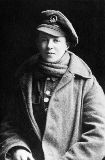
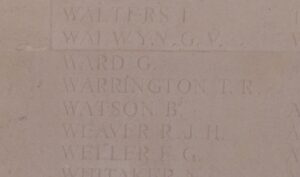
Harry White, Sapper, 108108, Royal Engineers. Harry was born in 1895, the son of George and Sarah White, of 15, Thespian Street, Aberystwyth. He enlisted at Aberystwyth on 27 October 1914 into the 10th (Rhondda) Battalion, Welsh Regiment, giving his occupation as Blacksmith. Due to his trade, Harry was transferred to the 123rd Field Company, Royal Engineers on 24 November 1914, and became a Shoeing Smith. The company was attached to the 38th (Welsh) Division, and landed in France on 2 December 1915. Harry served with the Division throughout the war, seeing action at Mametz Wood in July 1916. The attack on the wood began on 7 July, but met with fierce resistance, and it took until 14 July to totally clear the wood. The Division suffered terrible casualties at Mametz, and were taken out of the line, and moved to Ypres to rebuild. Harry then transferred to the 151st Field Company, RE, still in the same Division. The Division fought at the Battle of Pilckem Ridge on 31 July 1917, and in the ensuing Battle of Langemarck. Harry was seriously wounded on 17 September 1917 after being struck in the leg by shrapnel, and was evacuated to a Casualty Clearing Station where his leg was amputated. He was repatriated back to the UK, where his leg became septic, and had to be re-amputated, but sadly after suffering for several months, Harry died at the Barry Military Hospital at Northampton on 15 February 1918, aged 22. Harry’s funeral took place with full military honours in Llanbadarn Road Cemetery.
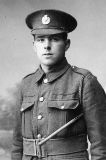
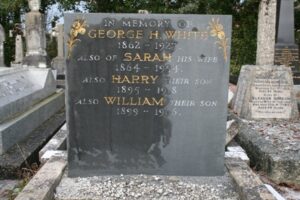
Evan Williams, Private, 44135, Welsh Regiment. Evan was the son of David and Margaret Williams, of 12, Prospect Street, Aberystwyth. He worked as a grocer prior to enlisting into the army on 9 December 1915, and was posted to France to join the 2nd Battalion, Welsh Regiment. The battalion was part of the regular army and had been on the Western Front since August 1914 attached to 3 Brigade, 1st Division. Evan probably joined the battalion early in 1916, prior to its move south from the Loos sector to the Somme. He was severely wounded during the Somme offensive, suffering gunshot wounds to the arm and paralysis on his left side, and was invalided home for treatment at a military hospital in Chelsea. Evan never recovered from the trauma and died at Aberystwyth on 22 May 1922, aged 29. He is not commemorated by the CWGC, as he died after the cut-off date for commemoration.
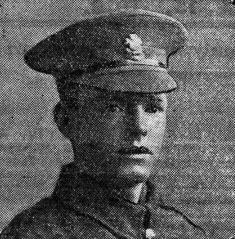
World War Two, 1939-1945
Francis Joseph Edwards, Sergeant, Wireless Operator/Air Gunner, 1316995, Royal Air Force Volunteer Reserve. He was the son of Joseph and Elizabeth Edwards of Aberystwyth and served with 427 (Royal Canadian Air Force) Squadron. Formed in 1942 the squadron was originally equipped with Wellington aircraft before being re-equipped with Halifax aircraft at the time of Francis’ death. On 18 April 1944 the squadron, made up of fifteen aircraft, was detailed to target Le Bourget in France. The mission was considered a success with all aircraft returning safely except Halifax BIII, LV789. The aircraft, piloted by Warrant Officer G H Coathup, was lost with Francis and all the crew of seven killed. He was 23 years of age and is buried with his fellow crew members in Clichy Northern Cemetery, France.